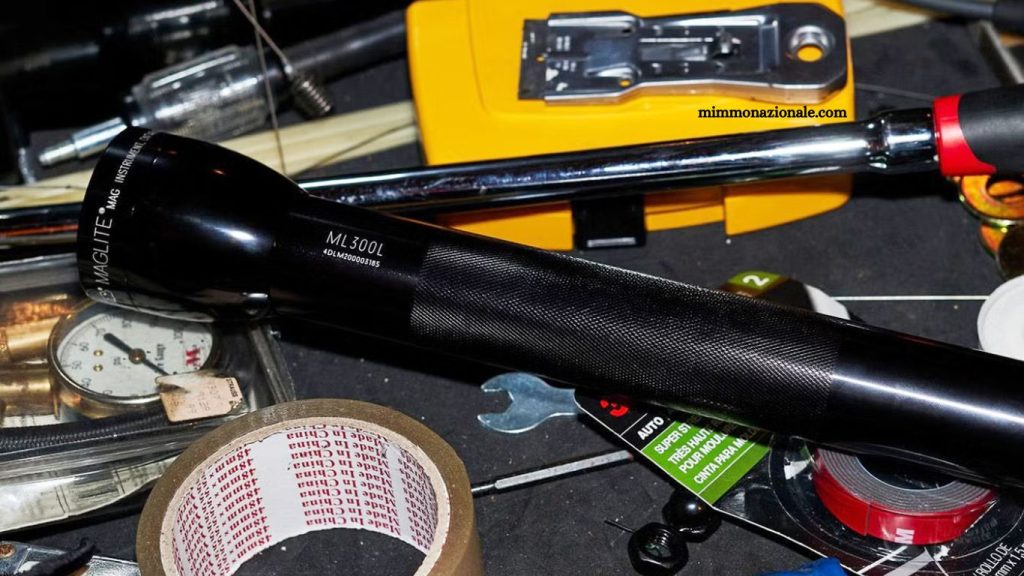While smartphones double as flashlights, they often fall short when you need real brightness like finding keys under a movie theater seat. LED flashlights deliver far more power and range, lighting up dark rooms during outages or guiding you outdoors on moonless nights.
Having a dedicated flashlight also preserves your phone’s battery, crucial during blackouts or emergencies when charging isn’t an option.
We tested a range of popular models to identify the best flashlights for everyday tasks, outdoor adventures, or keeping in your car for unexpected situations.
The Best Flashlights
- Best Overall: Maglite ML50L LED Flashlight
- Best Value: Anker Bolder LC40 LED Flashlight
- Best Tactical: Streamlight Polytac X USB LED Flashlight
- Most Consistent Light: ThruNite Archer 2A V3 LED Flashlight
- Longest Runtime: Acebeam E75 LED Flashlight
Read More: Top Portable Power Stations 2025 – Reliable Power for Home Backup, Camping, and Travel
How We Tested
We evaluated flashlights based on three key factors: lumens, beam drop-off, and beam pattern.
Lumens: To measure brightness, we used an integrating sphere, a lab-grade device that captures all emitted light to provide precise readings. Since professional spheres are costly, we built our own with guidance from product engineers and calibrated it against industry-standard lights. Measurements were taken at intervals: immediately, every 30 seconds up to 3 minutes, at 5 minutes, and every 5 minutes up to 30 minutes. The 30-second reading was used as the official lumens figure, as most LEDs stabilize after an initial drop.
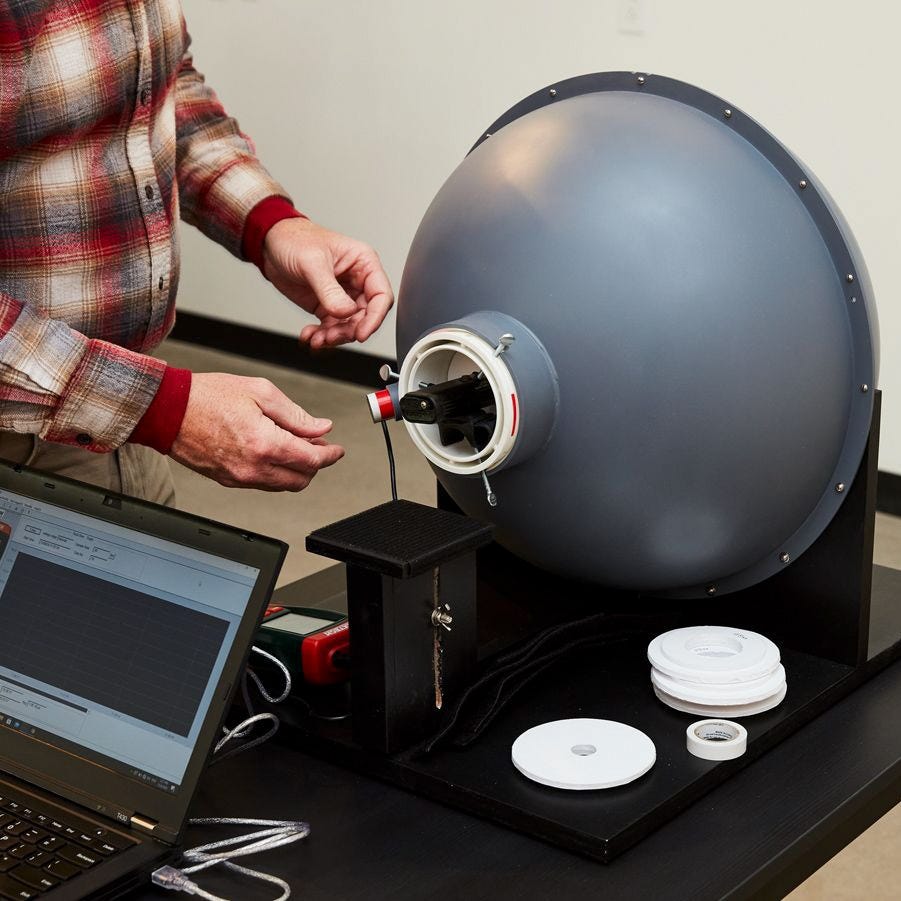
Beam Drop-Off: We tested the distance at which a flashlight could clearly illuminate a target. Ten reflective cones were placed every 5 meters up to 50 meters, and a neutral-gray silhouette was moved between cones to determine the effective range.
Beam Pattern: At 10 meters, we measured brightness at the center and 5 degrees to the right and left, establishing the width of the brightest portion of the beam.
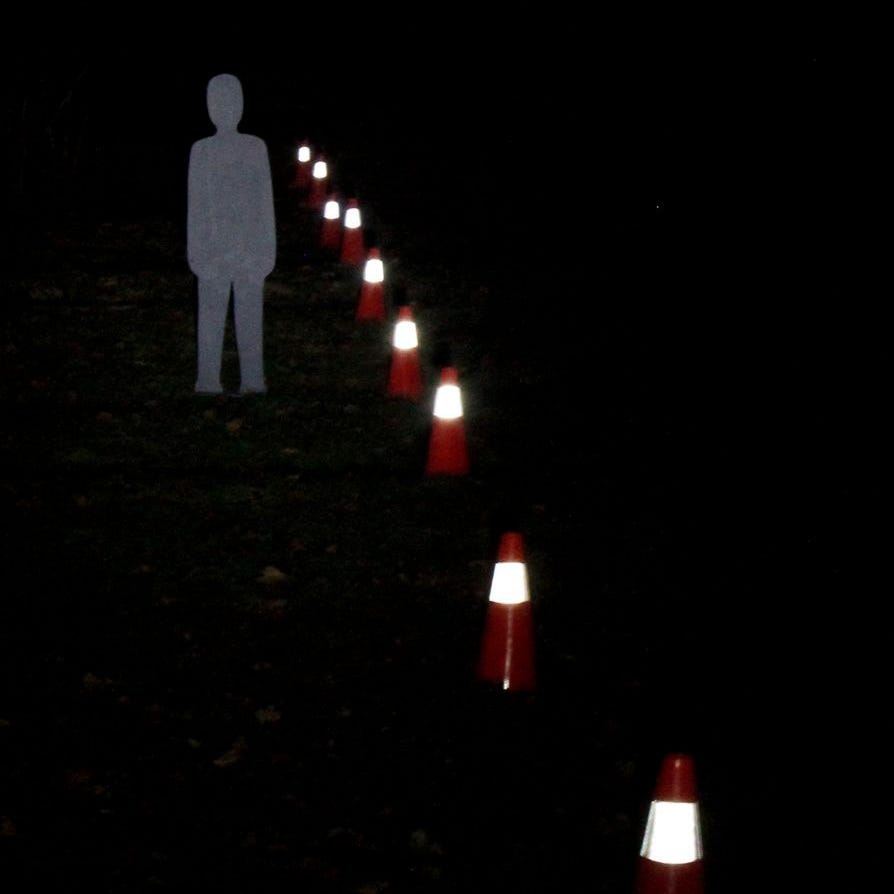
New additions like the ThruNite Archer 2A V3 and Acebeam E75 4500 were selected after research on product listings, user reviews, and enthusiast data. We are also testing the ArkPro Ultra from Olight and another ThruNite model, and will update our recommendations based on their performance.
Maglite ML50L LED Flashlight
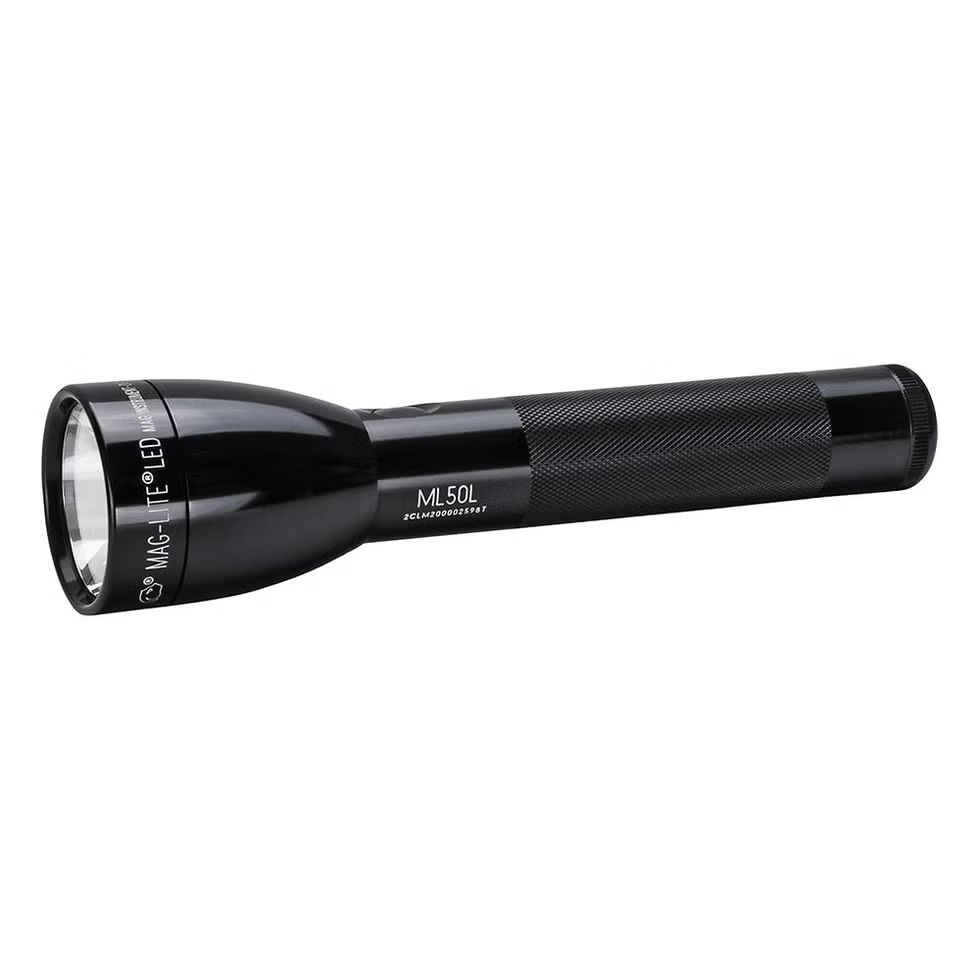
Pros:
- Adjustable reflector from spot to flood
- Easy to toggle between functions
Cons:
- Relatively heavy
Despite measuring 342 lumens in our tests, the ML50L performed like much brighter flashlights. In beam drop-off testing, our human silhouette was clearly visible at 50 meters with a focused spot, and still identifiable at roughly 90 meters. Switching the reflector to flood widened the illuminated area to 50 meters, though the beam was slightly dimmer and showed a softer center.
The flashlight features five functions—high, low, eco, strobe, and momentary on—organized into four function sets: general, outdoor, law enforcement, and tactical. Setting a function set is simple and typically done once, while switching functions only requires a single, double, or triple click. Law enforcement and tactical sets include momentary on, letting the light activate only while the switch is pressed.
The ML50L demonstrates that maximum lumens aren’t everything. Its focusing reflector allows the beam to reach distances comparable to brighter lights, making it versatile for both close and far illumination.
Key Specs:
- Lumens: 490 claimed, 342 measured
- Runtime: 16h 41m
- Battery: 2× C alkaline
- Rating: IPX4
- Adjustable Focus: Yes
- Length: 8.18 in
Best Value: Anker Rechargeable Bolder LC40 LED Flashlight
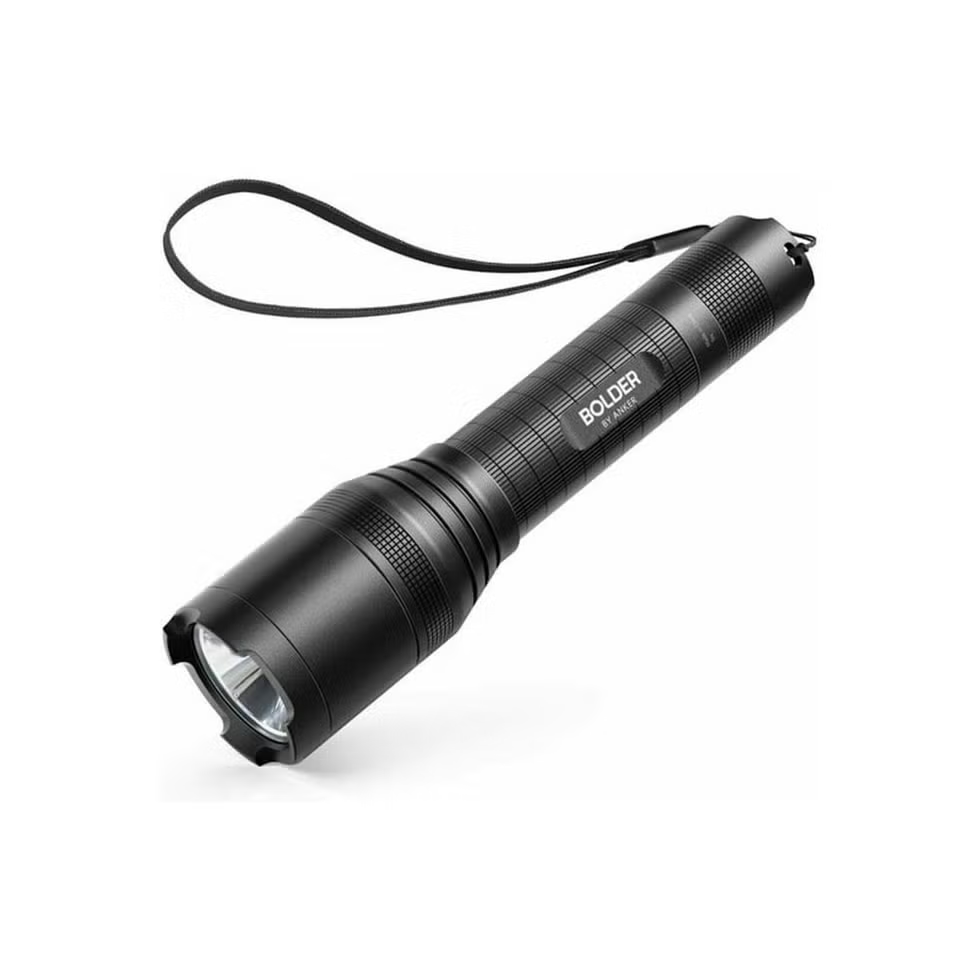
Pros:
- Simple, easy-to-use functions
- External charging port
Cons:
- Non-replaceable battery
The Bolder LC40 delivers excellent value with reliable performance. Its output starts at just over 400 lumens, stabilizing to a consistent 200 lumens after three minutes and staying within 10 lumens for the remainder of our 30-minute test.
The beam is slightly narrower and more focused than the Polytac USB X, allowing it to illuminate 50 meters clearly and maintain visibility out to 90 meters.
It offers five functions—high, medium, low, strobe, and SOS—easily accessed with sequential clicks. The aluminum body is fully sealed, preventing battery replacement, but an external charging port allows convenient recharging.
Key Specs:
- Lumens: 400 claimed, 384 measured
- Runtime: 8h 35m
- Battery: 3350mAh Li-ion rechargeable (non-replaceable)
- Rating: IPX5
- Adjustable Focus: No
- Length: 5 in
Best Tactical: Streamlight Polytac X USB LED Flashlight
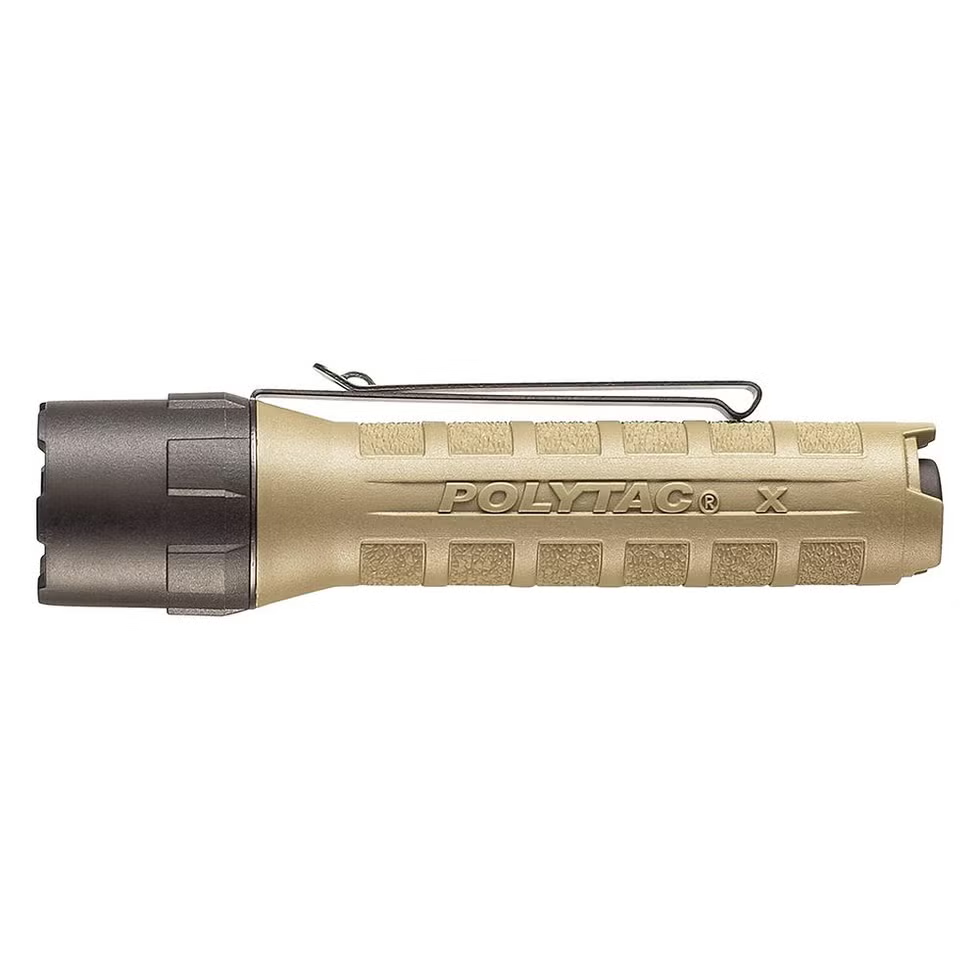
Pros:
- Plastic body transmits less heat/cold
- High water resistance
Cons:
- Awkward program selection
The Polytac X USB excelled in raw brightness. Measured at 554 lumens after 30 seconds, it gradually dropped to 334 lumens at 15 minutes and remained stable at 324 lumens after 30 minutes—about 100 lumens higher than any other flashlight we tested.
Its fixed reflector produces a tight spot beam, with brightness dropping about 50% just 5 degrees off-center. At 50 meters, the human silhouette was clear and remained identifiable up to 90 meters.
The nylon polymer body provides a secure grip and feels warmer than aluminum in cold conditions. A two-way clip allows pocket attachment lens up or down; we preferred lens down outside the pocket.
The Ten-Tap selector switch provides three preprogrammed function sets: low/medium/high, high/strobe/low, and high only. While selection can be awkward, most users set it once. On high, the Polytac X ran nearly 5.5 hours before shutting off.
This flashlight is ideal for those seeking tactical performance, durable design, and long runtime.
Key Specs:
- Lumens: 600 claimed, 554 measured
- Runtime: 5h 25m
- Battery: SL-B26 Li-ion rechargeable (included)
- Rating: IPX7
- Adjustable Focus: No
- Length: 5.46 in
Most Stable Light Output: ThruNite Archer 2A V3 LED Flashlight
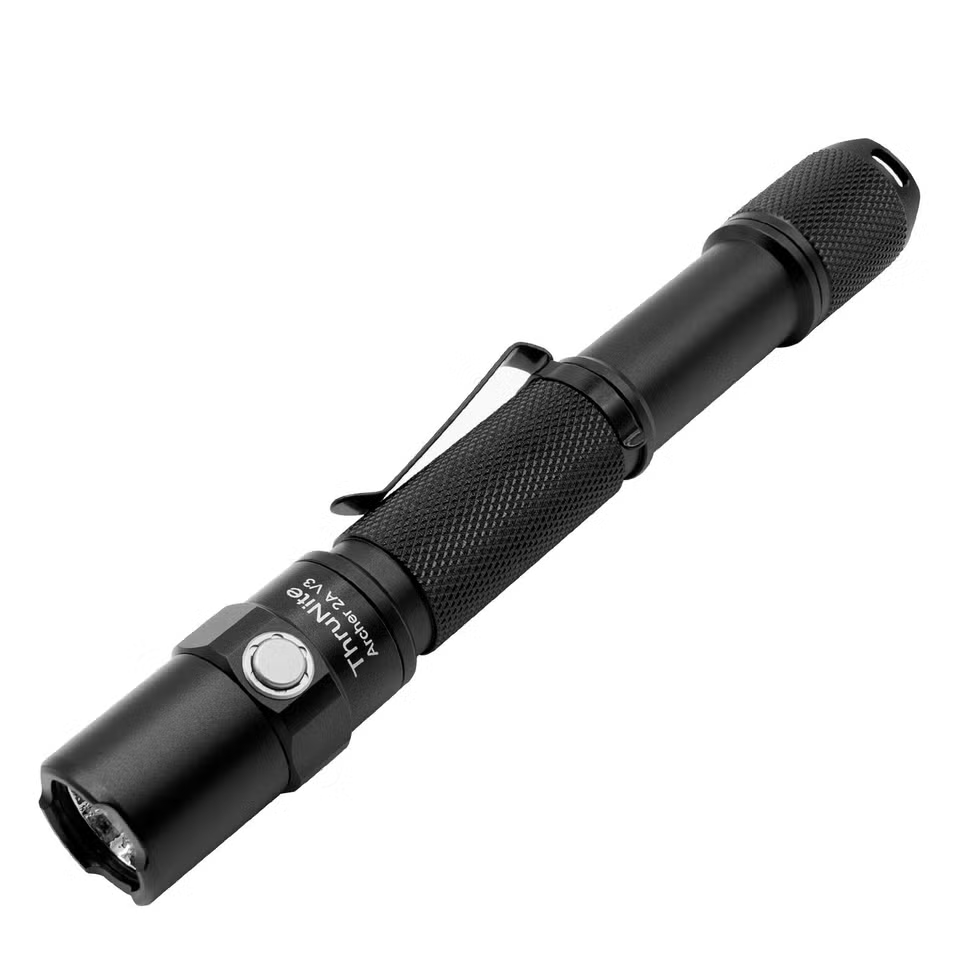
Pros:
- Consistent lumen levels
- Lightweight
- Dedicated brightness adjustment button
Cons:
- Less consistent at maximum brightness
The ThruNite Archer 2A V3 is compact, lightweight, and reliable for everyday use. It maintains consistent lumen output for over 8 hours on medium settings, though the brightest mode drops after about 3 minutes—a common trait for most flashlights.
Its small size makes it ideal for carrying in a pocket, while variable brightness levels suit tasks from checking under a sink to taking out the trash at night. While not the brightest or longest-lasting option, its consistency, portability, and affordability make it a dependable choice for home or on-the-go use.
Key Specs:
- Lumens: 500 (estimated)
- Runtime: 34h 14m (low)
- Battery: 2× AA
- Rating: IPX8
- Adjustable Focus: No
- Length: 6.1 in
Longest Runtime: Acebeam E75 4500 LED Flashlight
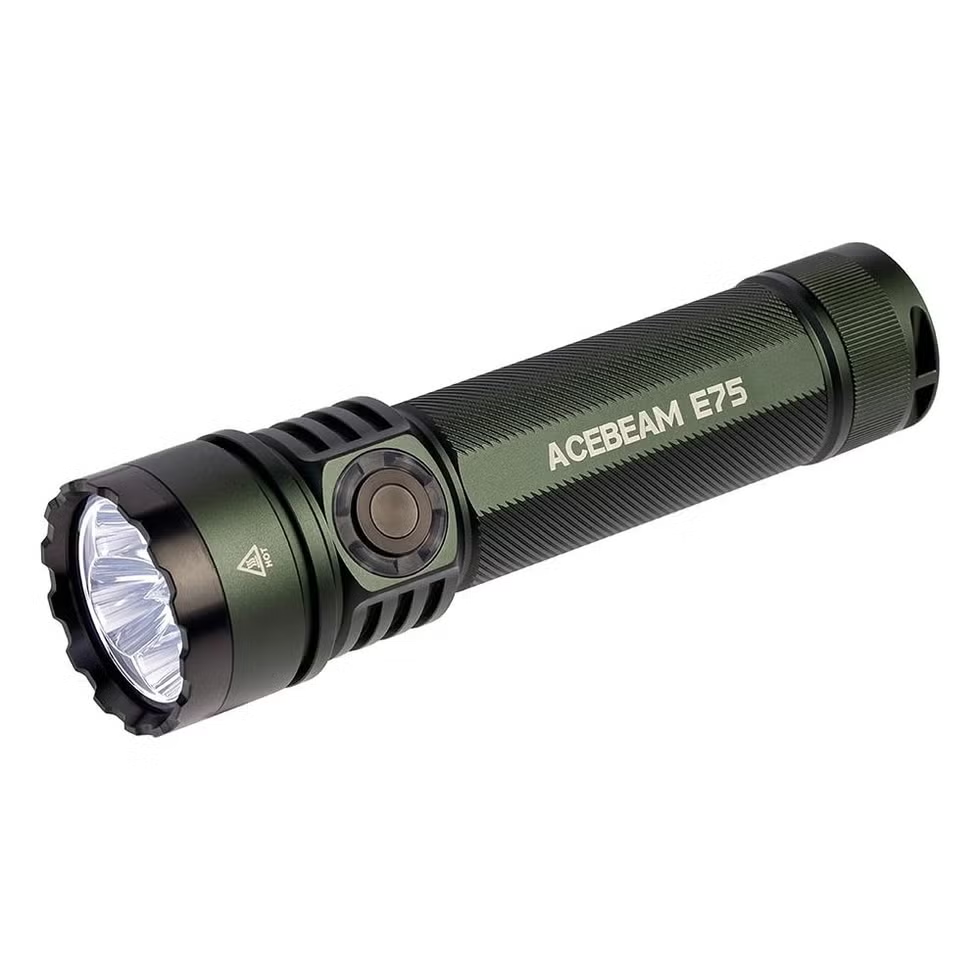
Pros:
- Extremely bright
- Convenient size for outdoor use
- Exceptional runtime
Cons:
- Too bulky for everyday carry
The Acebeam E75 is an enthusiast-grade flashlight designed for extended use. With an estimated 4500 lumens and a beam reaching 260 meters, it’s ideal for camping or navigating dark, remote areas. Its standout feature is runtime, lasting up to 26 days on low, making it reliable for prolonged outdoor activities or emergencies.
While it’s more expensive and too large for pocket carry, this flashlight is perfect for those who need powerful, long-lasting illumination for hours at a time.
Key Specs:
- Lumens: 4500 (estimated)
- Runtime: 26 days (low)
- Battery: Rechargeable lithium-ion
- Rating: IPX8
- Adjustable Focus: No
- Length: 5.09 in
Most Versatile: Olight ArkPro Ultra Flashlight
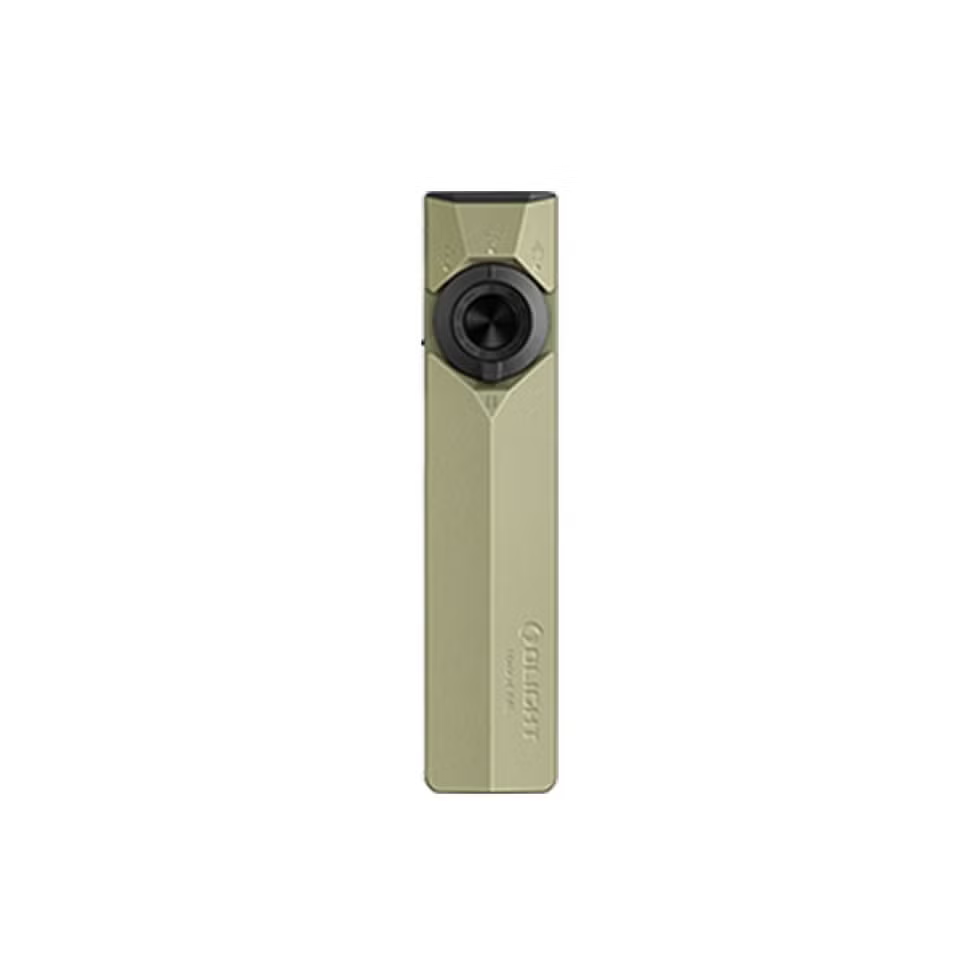
Pros:
- Multiple lighting modes
- Light-up display on the body
Cons:
- Non-replaceable battery
The Olight ArkPro Ultra stands out for its slim, pocket-friendly design and versatile features. It offers four lighting modes: long-range spotlight, shallow floodlight, UV light, and a laser pointer, which can also be used simultaneously—for example, shining the floodlight while toggling the laser.
A built-in display shows battery level, brightness, and lockout mode, preventing accidental activation by children. USB-C charging adds convenience, as it works with most smartphone chargers.
This flashlight combines portability, multi-functional lighting, and user-friendly features, making it ideal for everyday use and specialized tasks.
Key Specs:
- Lumens: 1,700
- Runtime: 14 days (moonlight mode)
- Battery: 2,000-mAh lithium polymer
- Rating: IPX7
- Adjustable Focus: No
- Length: 4.88 in
Brightest With Alkaline Batteries: Rayovac DIY3AAA LED Flashlight
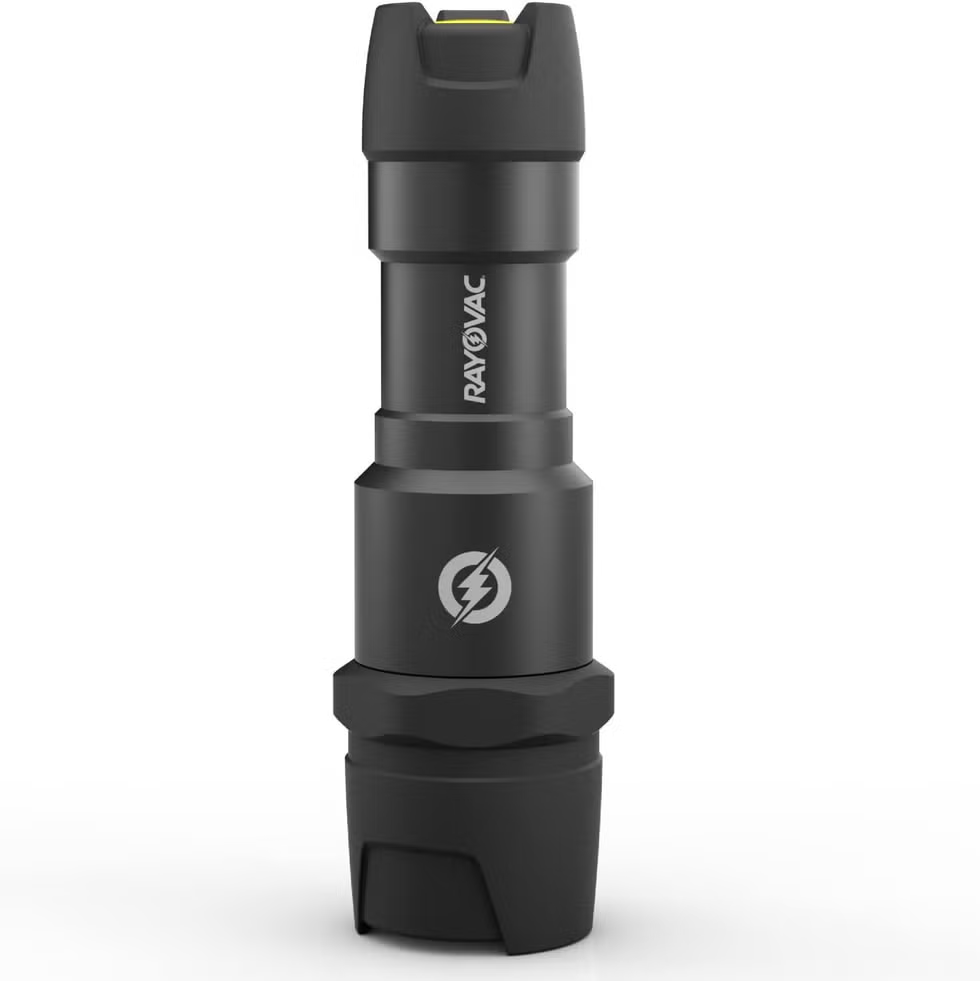
Pros:
- Long runtime
- Uses common AAA alkaline batteries
Cons:
- Only two light modes
The Rayovac DIY3AAA is a medium-sized flashlight powered by three AAA alkaline batteries. It ran for over two days in our tests, with measured brightness of 271 lumens at 30 seconds, gradually dropping to 165 lumens over 30 minutes. On the second day, it still provided enough light to read in the dark. The light has a slightly amber hue, most noticeable late in the runtime.
Beam testing showed the flashlight was bright enough to identify a human silhouette at 50 meters and still visible at 90 meters, though less distinct.
It has two modes high and energy saver toggled via the power button. Rubberized ends protect against drops and improve grip.
Key Specs:
- Lumens: 300 claimed, 271 measured
- Runtime: 48h 42m
- Battery: 3× AAA alkaline (included)
- Rating: IP67
- Adjustable Focus: No
- Length: 6.25 in
Lightest: Ledlenser P5R LED Flashlight
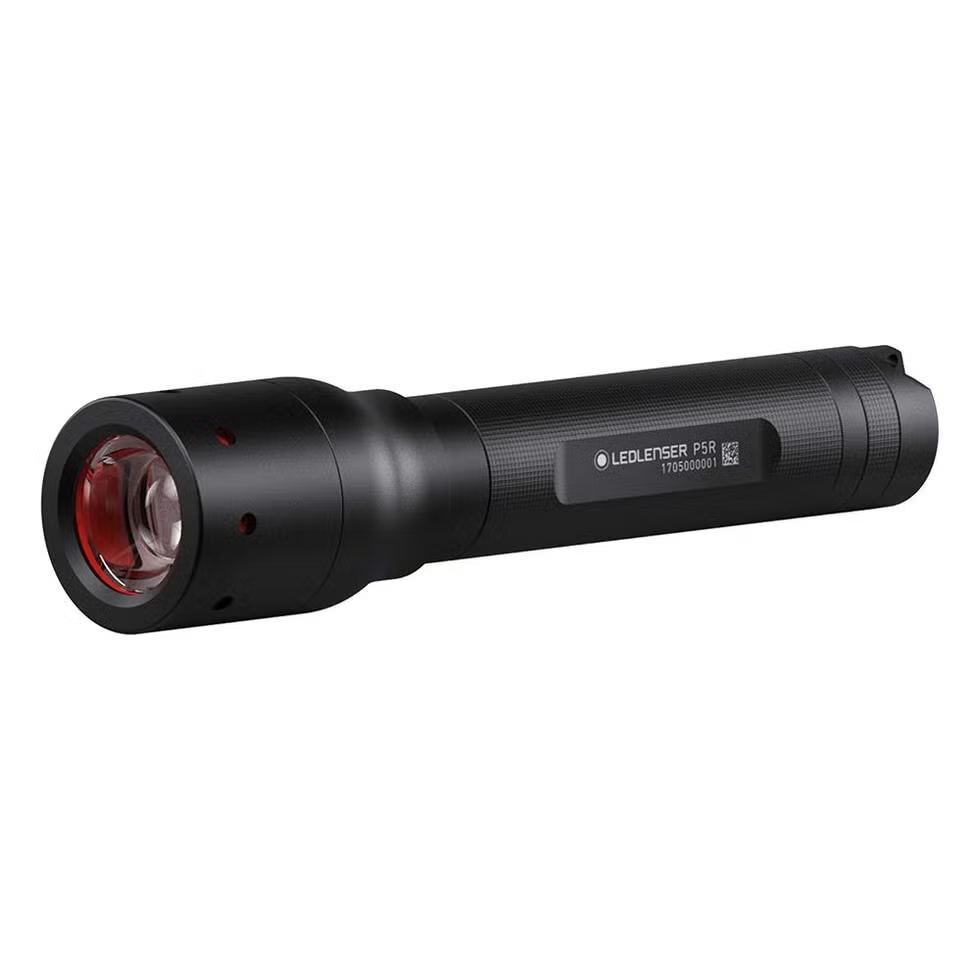
Pros:
- Adjustable beam focus
- Magnetic charging connection
Cons:
- Brightness drops to low setting after 3 minutes
The Ledlenser P5R shows why lumens aren’t the only factor in a flashlight’s performance. With 393 measured lumens (from 420 claimed), its adjustable beam—from spot to flood—allowed us to clearly identify a silhouette at 85 meters, outperforming some higher-lumen lights.
It has three modes—low, high, and blink—easily switched via the end-mounted metal button. Charging uses a magnetic connection, eliminating rubber-covered ports.
Brightness drops about 30 lumens in the first 3 minutes, then gradually dims to preserve battery, allowing the high mode to recover when toggled. Runtime testing confirmed nearly 5 hours on high, exceeding the claimed 3 hours.
Key Specs:
- Lumens: 420 claimed, 393 measured
- Runtime: 4h 52m
- Battery: Li-ion rechargeable (included)
- Rating: N/A
- Adjustable Focus: Yes
- Length: 4.84 in
LEDs vs. Traditional Bulbs
Traditional incandescent bulbs are inefficient, converting up to 90% of energy into heat rather than light, according to the U.S. Department of Energy. Halogen bulbs are slightly more efficient but still generate significant heat, and their delicate filaments are prone to breaking when jostled or dropped.
LEDs, in contrast, are 70–75% more efficient than incandescent bulbs. As semiconductors, they emit light when current passes through, eliminating fragile filaments. This makes LEDs durable, energy-efficient, and brighter than traditional bulbs using the same power, making them ideal for flashlights and other portable lighting.
Managing Heat in LED Flashlights
Even though LEDs are more efficient than traditional bulbs, high-powered flashlights can still generate significant heat. Excess heat can reduce LED efficiency and potentially damage the light. To prevent this, many LED flashlights include power-regulating circuitry, which also helps extend battery life.
For everyday use, heat is rarely a concern. Avoid running your flashlight at maximum output for extended periods, and it will remain safe, efficient, and long-lasting.
Don’t Rely Solely on Lumens
Flashlight brightness is measured in lumens, which quantify total light output. While modern manufacturers are more accurate than in the past, some still inflate figures. Often, the listed lumen output reflects the LED’s peak potential, not the sustained output, which may be limited to reduce heat or extend battery life.
High lumens don’t always mean a flashlight performs best in practice. Beam distance and width depend on reflector and lens design, not just raw brightness. Additionally, LEDs are brightest when first turned on, gradually dimming as they heat up—usually imperceptible to the eye. Even as the LED dims, your eyes adjust, often allowing better visibility with less light.
What Do IP Ratings Mean?
IP stands for Ingress Protection, indicating how well a flashlight resists solids and liquids. Ratings include two digits: the first measures protection from solids like dust, and the second measures resistance to liquids, usually water. An “X” in either position means the flashlight hasn’t been tested for that category.
- First digit (solids): 6 = dust- and sand-tight
- Second digit (liquids): 8 = can be submerged deeper than 1 meter for over 30 minutes without damage
IP ratings provide a partial view of durability. Consider materials—from lightweight plastic to rubberized bodies to anodized aluminum—and features like whether the flashlight floats, plus the warranty, to get a full picture of its ruggedness.
Frequently Asked Questions
What is the brightest flashlight available?
Brightness depends on lumens and beam design. High-lumen flashlights like the Acebeam E75 offer extreme brightness and long-range visibility.
How long do LED flashlight batteries last?
Battery life varies by mode and capacity. Some LED flashlights, like the ThruNite Archer 2A V3, can last over 30 hours on low.
What does IPX waterproof rating mean?
IPX ratings measure water resistance. For example, IPX8 indicates the flashlight can be submerged beyond 1 meter without damage.
Are rechargeable flashlights better than battery-powered ones?
Rechargeable flashlights save money and reduce waste, while battery-powered options offer convenience and easy replacement in emergencies.
How do I choose the right flashlight for everyday use?
Consider size, beam distance, lumens, battery life, and durability to match your typical tasks and environment.
Can flashlight LEDs overheat?
High-output LEDs can generate heat. Modern flashlights include circuitry to manage temperature and extend battery life.
What do lumens actually measure?
Lumens measure total light output. A higher lumen count doesn’t always mean a farther or more useful beam.
Conclusion
Choosing the right flashlight depends on your needs—whether it’s everyday carry, tactical use, long runtime, or versatility. Modern LED flashlights offer bright, efficient, and durable lighting compared to traditional bulbs, while features like adjustable beams, rechargeable batteries, and IP ratings ensure performance in any situation.

